PYROCLASTIC FALLOUT
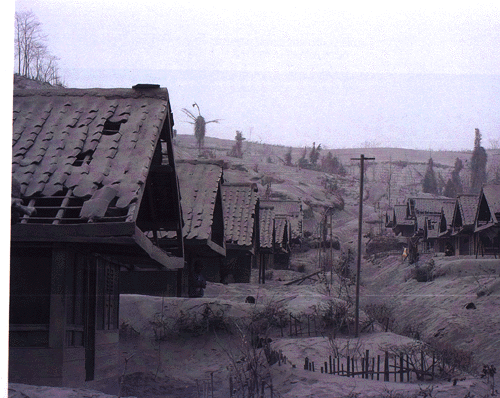
Ash fall on village in Indonesia from eruption of Galungung volcano, in
1982. Photograph by Maurice and Katia Krafft.

Ash fall on hut 3 km from rim of Pinatubo volcano, Philippines, after the major 1991 eruption. Photograph by R. P. Hobblitt, U.S. Geological Survey.
What is Pyroclastic Fallout?
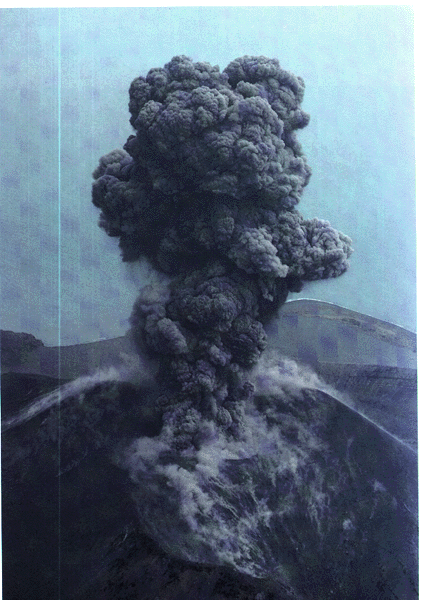
Eruption of Anak Krakatau, Indonesia, September, 1979, sending ash into the
atmosphere. Photograph by Maurice and Katia Krafft.
Pyroclastic fallout consists of particles that have been ejected from vents
and have travelled through the atmosphere before falling to earth or into
water. Fallout ash can also be derived from elutriation of ash the boils up
from pyroclastic flows
as they travel across the land. Pyroclastic material that falls
on land is "subaerial fallout," and that falling into water is subaqueous
fallout.
Transport of pyroclastic fallout material is by ballistic trajectory and
by turbulent suspension. Energy is supplied initially to fragments by the
eruption and later by wind. Tephra falling from above characteristically
drapes over the landscape.
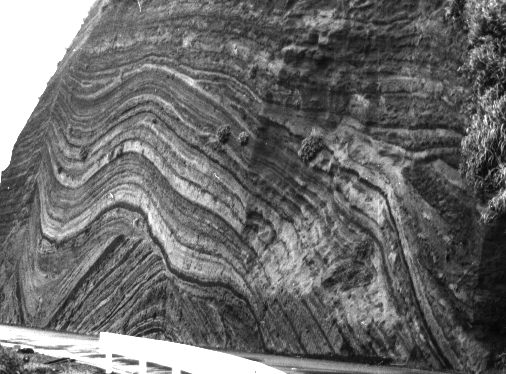
Pre-historic ash fall layers that blanket earlier topography.
Oshima Island, Japan. Photograph by Fisher.
Troubles with Long-Distant Pyroclastic Fallout
Lessons learned at Mount St. Helens, Mt. Pinatubo and many other eruptions
are that it is difficult to clean up after the fall of just a few centimeters
of ash, and that ash in the
atmosphere severely damages jet engines, thereby endangering the lives
of passengers.
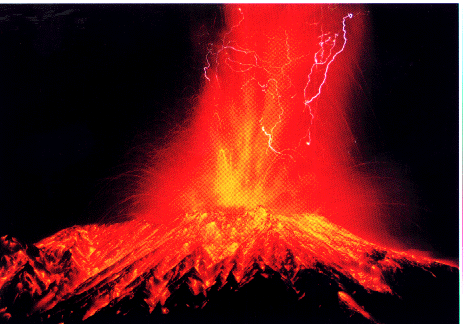
Sakurajima volcano, Kyushu, Japan. A volcano in frequent
small-magnitude eruption.
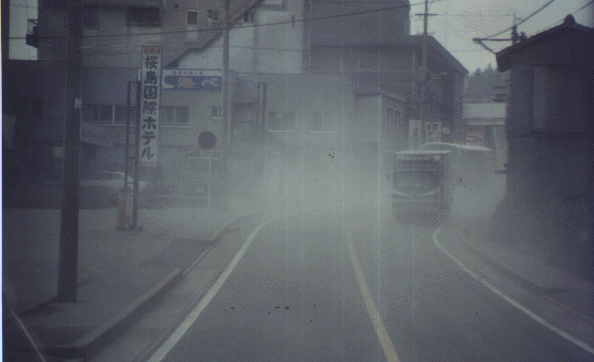
Living with an erupting volcano. Sakurajima city, located
on the flanks of Sakurajima volcano, is commonly
dusty from frequent eruptions. The photograph shows
ash being stirred by traffic after fallout of a small eruption.
Children often go to school wearing hardhats as
protection against occasionally larger ballistic lapilli.
Copyright (C) 1997, by Richard V.
Fisher. All rights reserved.




